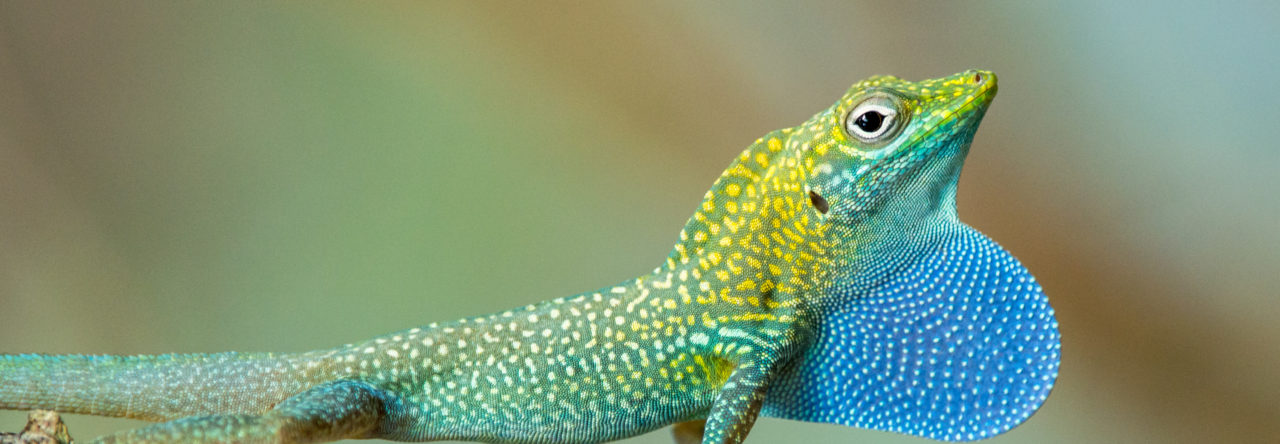
Introducing Anolis elcopeensis. (B) is a female; the rest are males.
In their new paper in Amphibian & Reptile Conservation, Poe and colleagues note that thirteen new species of Anolis have been described from Panama since 2007, bringing that country’s total to 44. They now raise those numbers to 15 and 45.
The first thing you need to know about Anolis elcopeensis is how to pronounce it. It’s named after the park formerly known as El Cope National Park in Panama, so it’s el-coh-pay-en-sis (the park now goes by the name Parque Nacional G. D. Omar Torrijos H.).
The second thing you need to know is that A. elcopeensis is a very close relative of A. fuscoauratus, a species widely-distributed throughout Amazonia and elsewhere in South America. Anolis elcopeensis differs from A. fuscoauratus and related species by its orange dewlap and small size (maximum: 45 mm snout-vent length). Mitochondrial DNA differences support its designation as a distinct species.
With the recognition of A. elcopeensis, that brings us to 399 Anolis species (according to a search on the Reptile Database)! Woo-hoo! And I suspect there are more soon to come. Indeed, Poe et al. suggest that A. fuscoauratus may be a complex of many cryptic species. Stay tuned!
Abstract:
We describe Anolis elcopeensis, a new species of anole lizard from low to moderate elevations of the Pacific slope of the Cordillera Central of central Panama. Anolis elcopeensis is a close relative of and resembles the Amazonian species A. fuscoauratus but differs from it and similar species mainly in body size, male dewlap color, and mitochondrial DNA. We estimate the phylogenetic position of the new species relative to all species of Anolis, and analyze variation in the mitochondrial COI gene among some populations of the new species. We also discuss the mythical presence of Anolis fuscoauratus in Panama, document the possible occurrence of A. maculiventris in Panama, and present preliminary evidence for multiple cryptic fuscoauratus-like species in eastern Panama.








 The just completed
The just completed 





